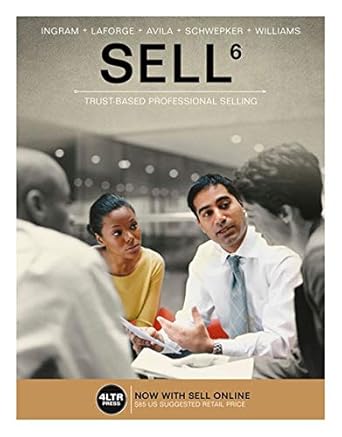Question
Performance Industries has purchased a new lathe to manufacture a high-value part used in one of their new market products. The lathe has been in
Performance Industries has purchased a new lathe to manufacture a high-value part used in one of their new market products. The lathe has been in use for 3 months. A sample of 25 parts was taken and the mean failure rate is 2%. Upper management really embraces the claim and would like to know for sure if this is true with 95% certainty and want to know if this lathe can meet the requirements of the customer. You and your team want to be certain so you analyze the data, however, because you want to do thorough job, and be certain that you can trust your data
what can you do to ensure this? Your supervisor sounds intrigued by what you are doing and wants to ask you questions about how you will go about getting to the best outcome, he/she says that they have heard a lot about this Six Sigma, and they are looking to you for some clarification. They are curious and wanted to know
(Question #2) if it were true or false that the concept of capability is about measuring how a process performs in relation to a set of requirements? They tell you that they heard if you try to conduct a capability analysis with non-normal data that your capability analysis would not be reliable and ask you
(Question #3) if this was true or false? They then ask you
(Question #4) can a capability analysis be done if you do not have continuous data (Yes/No). Then they ask you more about this method of ensuring you can trust the data. They ask
(Question #5) if it is true that you can use this method on both variable data and attribute data (Yes/No). Now they are really intrigued and want to know more. They said they heard when you are verifying the method of taking measurements is good or bad, you must understand something called R&R. You tell them yes you understand, and you proceed to tell them that the acronym R&R stands for
(Question #6). Now they not only want to know what the acronym stands for, but they want to know what each of the R's means. You tell them that one of the R's means
(Question #7), and the other R means (Question #8).
Now that you feel confident with the data, and that you can trust it, you want to monitor the process. Your Quality Engineer is interested in the control charts that you have told him/her that you are learning about but has doubts about whether or not the control charts will catch small shifts in the data. You tell him/her that you learned about two types of charts that can catch small shifts in your data. They are (Question #9) and(Question #10). Your QE now wants to know if either one of them is more sensitive than the other, and you say (Question #11, Yes/No). He/She asks you which one is more sensitive than the other and you answer
(Question #12). Impressed with what you learned, you are now asked about what other types of control charts have you learned in addition to the Shewhart Charts and these last two charts you shared. You say in our last week we learned about additional charts. Excited to hear that, your QE asked if you learned anything about a chart that uses deviation from the nominal instead of the measured variable. You say, yes you have, the name of that chart is (Question #13). Impressed with what you have learned, and shared, you are asked to come to your QE's office to discuss your future, which includes more responsibility and a possible raise.
Step by Step Solution
There are 3 Steps involved in it
Step: 1

Get Instant Access to Expert-Tailored Solutions
See step-by-step solutions with expert insights and AI powered tools for academic success
Step: 2

Step: 3

Ace Your Homework with AI
Get the answers you need in no time with our AI-driven, step-by-step assistance
Get Started


